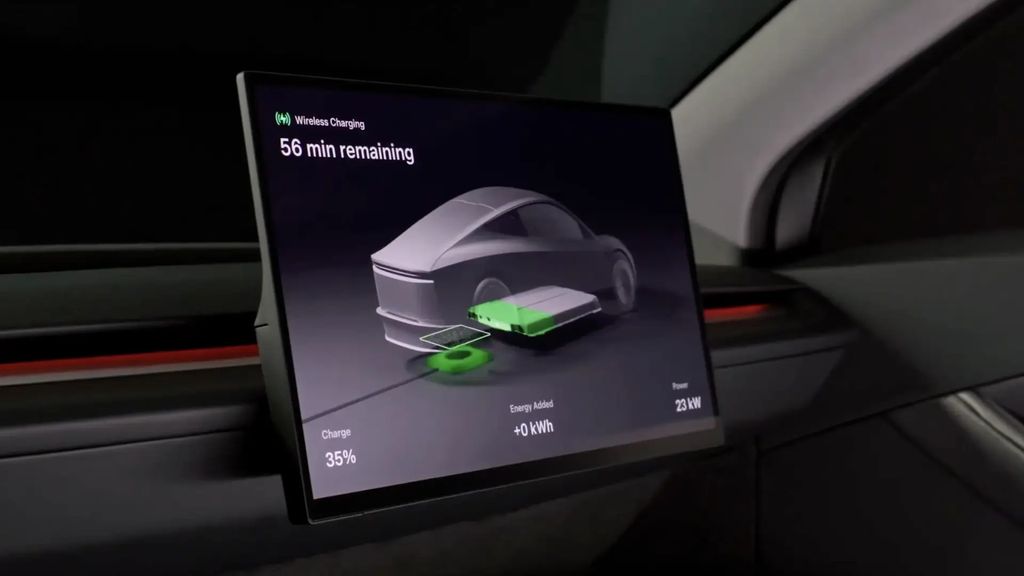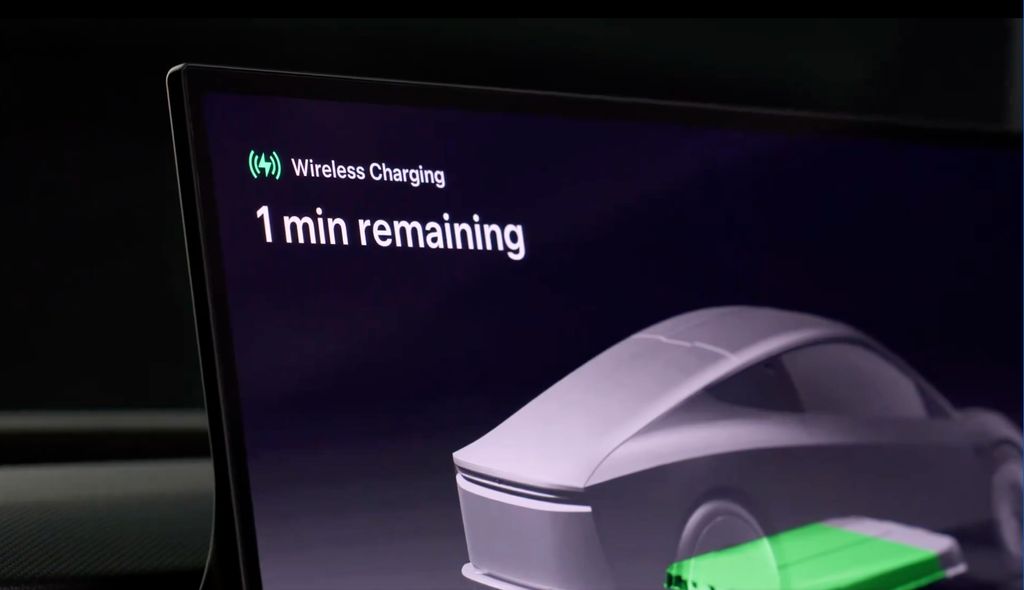- The Tesla Cybercab won’t have a charging port; instead it will charge wirelessly.
- The Cybercab has a rumored target of 200 miles of range, from an average efficiency of 5.5 miles per kWh.
Last week, when Tesla showed off the Cybercab’s prototype concept design, CEO Elon Musk was clear that it wouldn’t have a charging port. Instead, it would charge wirelessly—a cool idea, but no one was sure exactly how that would work. We had some idea based on a leaked video, but now we’ve got a high-def look at how its wireless charging works.
Or might work, we should say. As with everything Tesla-related, there are a lot of big promises and “we’ll see what happens” moments. But this new video shows off a very interesting concept.
It looks like the Cybercab’s charging equipment is located in the rear of the car, below the trunk, and (presumably) near the rear axle of the car. On the ground, lies a wireless charging square, that effectively doesn’t look all that different from what you’d use on a cellular device. The car seamlessly starts charging, at speeds of 25 kW.

Of course, like any Tesla technical showcase, it’s never entirely clear what’s a functional prototype, and what’s just a proof-of-concept demo of what the brand’s currently working on. It’s not clear if there’s any sort of physical apparatus or part that needs to be touching the charging pad, either. Is there a plate or piece of the Cybercab that needs to be touching the charging pad? It’s not clear, and the video doesn’t show that.
Also, Tesla famously doesn’t have a press office, so there’s no way I can really ask, either. Still, if this is true, 25 kW wirelessly is pretty dang impressive, considering that wireless charging tends to be more lossy compared to a wired physical connection. No details on the amperage of the charger itself, though.
Interestingly, the video could give us hints as to what battery equipment the Cybercab is working with, and what range it could hold. The animation showed that the Cybercab started charging at 35%, and quickly rocketed up to what was likely its maximum of 25 kW. The screen said that the car would finish charging in 56 minutes.

If we do some fuzzy math and assume that the Cybercab’s charging target was 100%, we’d guesstimate that the Cybercab’s battery is 35 kWh. That’s further somewhat verified by Top Gear, who reported that Tesla was targeting a range of 200 miles, and an efficiency rating of 5.5 kWh per mile. If we divide 200 miles by 5.5, we’re at 36.3, which is right on track for the 35-36 kWh we’ve guesstimated.
That doesn’t sound huge, but given the fact this thing is meant to be a purpose-built EV self-driving cab where its logistics and ride would be managed by a computer, 35 kWh is probably enough battery for the short journeys it will likely do.
Of course, like every Tesla demo and video we’ve got to approach the situation with an abundance of caution. Demos, screens and slick animations are easy to generate by any designer or artist in the automotive industry worth their salt. Whether or not any of this ever comes to market, well, we’ll just have to wait and see.
Contact the author: kevin.williams@insideevs.com
Tesla’s Cybercab Wireless Charging Video May Tell Us A Lot
In a recent video released by Tesla, the company showcased its upcoming Cybercab model being charged wirelessly. This demonstration may seem like a simple showcase of a new feature, but it actually tells us a lot about the direction that Tesla is heading in terms of technology and innovation.
Wireless charging is not a new concept, but its implementation in a vehicle like the Cybercab marks a significant advancement in the automotive industry. By eliminating the need for cables and plugs, Tesla is making the charging process more convenient and seamless for its customers. This move aligns with Tesla’s vision of creating a more sustainable and efficient transportation system.
The video also highlights Tesla’s commitment to pushing the boundaries of electric vehicle technology. The Cybercab is expected to have a range of over 500 miles on a single charge, showcasing Tesla’s dedication to improving the performance and capabilities of its vehicles. Wireless charging is just one example of the innovative technologies that Tesla is incorporating into its vehicles to stay ahead of the competition.
Furthermore, the demonstration of wireless charging in the Cybercab suggests that Tesla is investing heavily in research and development to drive future advancements in electric vehicle technology. By investing in cutting-edge technologies like wireless charging, Tesla is setting itself up to be a leader in the electric vehicle market for years to come.
Overall, the video of the Cybercab being wirelessly charged is more than just a showcase of a new feature – it signifies Tesla’s commitment to innovation and sustainability in the automotive industry. As Tesla continues to push the boundaries of electric vehicle technology, it will be interesting to see what other advancements the company has in store for its customers.

